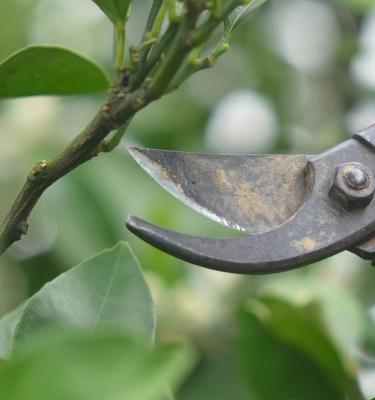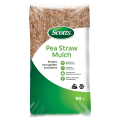There’s more to growing fruit trees than just harvesting their juicy offerings. Fruit trees need annual pruning to improve cropping, maintain vigour and develop a strong shape (sometimes called training). Each tree may take up to 45 minutes or more to prune correctly, so take your time and move slowly throughout your orchard. Plus, be considerate of your garden's design and make sure you have enough space for the training of your tree.
Controlling growth also makes it easier to harvest delicious fruits!
Summer pruning is needed to remove wayward or superfluous growth, but it is the winter prune that is vital for the trees' continued performance and longevity.
Here’s a few tips and tricks to get you started, including:
- When to prune
- How to prune
- Basic pruning and training techniques
- Tools of the trade
Pruned trees are healthy trees. Even though some people make this sound very complex, once you get started you’ll realise that it’s all pretty much common sense.
Winter pruning should start as late in the season as possible.
Follow these basic rules to determine when to prune each tree:
- Always prune the latest flowering trees first, and the earliest last.
- Apple and pear trees should be pruned first because they are late to flower.
- Cherry, peach and plum trees should be next - they're often the first to show their blossoms.
- Prune older trees before younger trees.
Basic pruning & training techniques
The ultimate objective of winter pruning is to:
- Open up the branches of the tree to allow light and air to penetrate.
- Encourage a strong branching system capable of supporting an abundance of heavy fruit.
The whole process is not dissimilar to that of pruning roses; in fact, the main concepts are the same:
- Remove dead and diseased wood (including broken limbs).
- Remove unwanted vertical shoots as well as those pointing to the ground.
- Remove branches growing in toward the centre of the tree.
- Remove the weakest of any branches that may be rubbing, growing too closely together or crossing over one another.
Each tree may take up to 45 minutes or more to prune correctly, so take your time and move slowly throughout your orchard.
Tools of the trade
There are many tools that should be on hand when pruning fruit trees including secateurs, loppers and a saw. Using the right tool for the job will save you time and effort. As a guide:
- Secateurs are for branches up to finger thickness (1-1.5m).
- Loppers are for branches up to 3cm thick.
- Saw is for anything larger than 3cm.
Training techniques
Central leader training
This method is used for apple, cherry, pear, pecan and plum trees.
It involves having a single trunk (leader) in the centre of the tree and the branches growing out from it, creating an overall shape similar to a Christmas tree.
- The aim is to have branches evenly spaced around and up the tree with a maximum of three or four branches per tier.
- Always leave adequate room for light and air movement before creating another set up buds to become the next tier, and so on all the way to the top. A space of around 40-50cm between tiers is ideal.
- The lowest tier should be the longest and the highest the shortest.
- When pruning, leave the central leader if the tree has more growing to do. However, if it has reached its final height, prune the tip back by about two thirds.
- Lateral branches should be pruned back to around six to eight buds on each branch, paying special attention to maintaining the overall shape.
Vase training
This is used for peach, nectarine and plum trees.
This involves removing the central leader, creating an open centre where the branches fan out toresemble the shape of a large bowl or vase.
- These trees have about four or five major limbs that radiate out from the trunk about 50-70cm above the ground.
- The main branches are pruned to around 60-90cm each winter, to an outward facing bud.
Cordon training
Involves training the fruit tree (usually an apple or pear) as a single stem, either vertically or at a 45 degree angle.
This technique is ideal in gardens with limited space, although it does severely reduce your harvest. Here’s a very basic guide to help get you started:
- Establish a trellis or wire to help train your tree (location is still important).
- Find a suitable tree with a strong central stem.
- Plant your tree as per usual, but position the base of the tree at the base of your wire.
- Prune any side growth to 2-3 nodes.
- Prune annually or when necessary to control growth.











